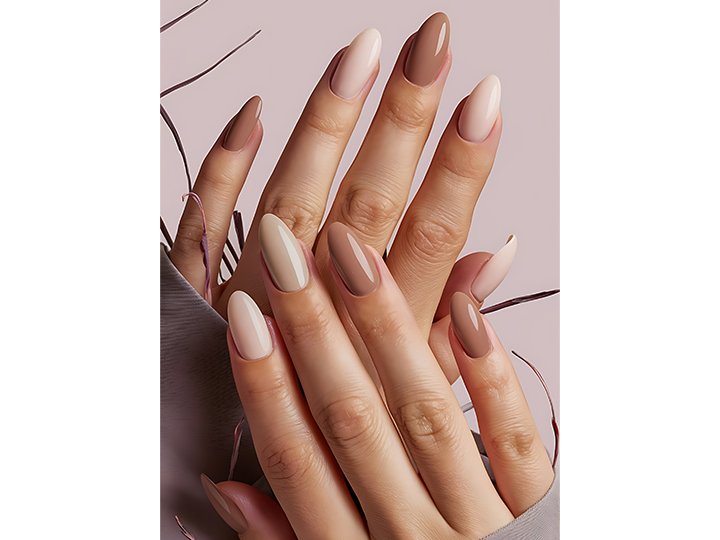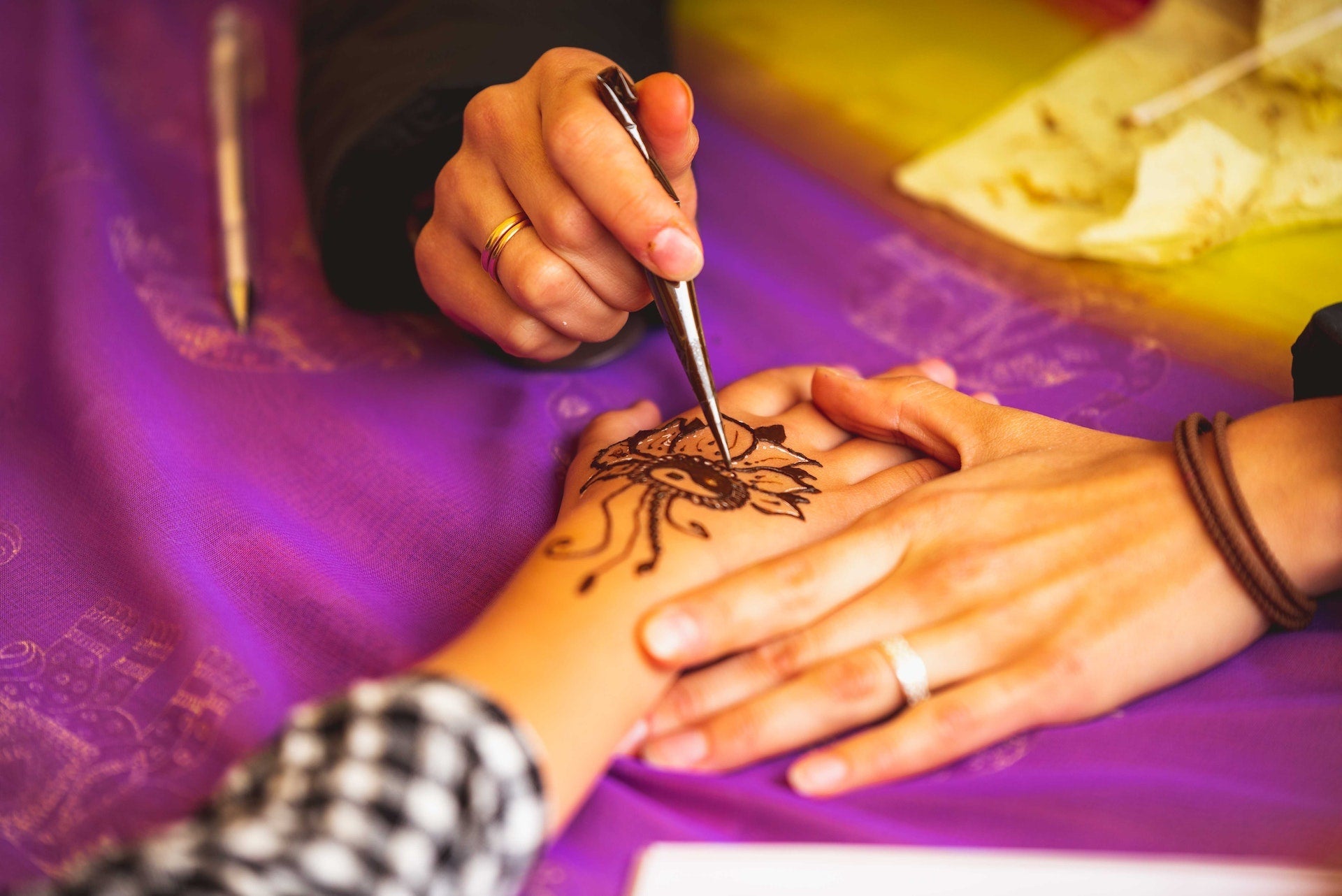If you have a young fashionista at home, you might have heard the question, "Can I get acrylic nails?" from your 10-year-old. Acrylic nails are undeniably popular among adults and teens, but should younger kids be getting them, too? As a parent, it's natural to wonder whether acrylic nails are appropriate for such a young age, and there are several factors to consider before giving the green light.
In this guide, we'll explore whether a 10-year-old can get acrylic nails, the potential risks involved, and alternatives that may be more suitable for kids. Whether you're thinking about a fun birthday treat or a way to boost your child's confidence, here’s what you need to know before heading to the salon.
What Are Acrylic Nails, and Why Are Kids Interested?
Acrylic nails are artificial nails made by mixing a liquid (monomer) with a powder (polymer) to create a hard, durable layer on top of the natural nails. They can be sculpted into various lengths and shapes, then painted or decorated in endless styles. For many people, acrylics offer the opportunity to experiment with fun and creative designs that aren’t possible with natural nails alone.
With the growing influence of social media, even kids as young as 10 are becoming interested in fashion trends, including acrylic nails. From colorful Instagram nail art to YouTube tutorials, it’s easy to see why kids might want to join in on the fun.
But is it safe for a 10-year-old to get acrylic nails?
Can a 10-Year-Old Get Acrylic Nails?
Technically, a 10-year-old can get acrylic nails, but whether they should is another matter entirely. Most salons don’t have strict age limits for acrylic nails, but the decision is usually left up to parents. Before making that decision, it’s essential to weigh the risks and understand the potential impact on your child’s nail health.
Here are some factors to consider:
1. Nail Health Concerns
Children's nails are still developing and tend to be thinner and more fragile than adult nails. Applying acrylic nails requires buffing the surface of the natural nail, which can weaken the nail plate. For a 10-year-old, this process can lead to damage such as:
- Thinning of the natural nail: Acrylics can cause the natural nail to become thin and brittle, especially when applied repeatedly.
- Infections: If the acrylic nails aren’t applied or removed properly, moisture can get trapped between the acrylic and the natural nail, leading to bacterial or fungal infections.
Given that young children’s nails are more vulnerable, these risks are higher for a 10-year-old than for an adult.
2. Potential for Allergic Reactions
Acrylic nails are made from strong chemicals, including the monomer and polymer that form the artificial nails. Some children may be more sensitive to these chemicals, leading to allergic reactions such as redness, itching, or swelling around the nails.
If your child has sensitive skin or allergies, acrylic nails may not be the best option.
3. Maintenance and Care
Acrylic nails require regular upkeep, including refills every 2–3 weeks. For a child, this can be time-consuming and costly. More importantly, acrylic nails can be easily damaged if the child isn’t careful. If they are broken or chipped, it can cause pain, damage to the natural nail, or even lead to an infection.
Most 10-year-olds may not have the patience or responsibility to care for acrylic nails properly, which increases the risk of nail damage or discomfort.
4. Safety in Removal
Removing acrylic nails is a process that should be done carefully, typically involving soaking the nails in acetone. Improper removal can result in damage to the natural nail, particularly if they are peeled or forcibly removed. If you’re considering acrylics for your 10-year-old, you’ll need to be sure that you can provide safe, professional removal when the time comes.
Safer Alternatives to Acrylic Nails for Kids
If your 10-year-old is eager to try out nail art but you’re concerned about the risks of acrylic nails, there are plenty of safer alternatives to explore. These options can still allow for creativity and fun without the long-term damage to their natural nails.
1. Stick-On Nails
Stick-on nails are a great alternative for younger children. These are temporary, easy to apply, and come in various fun designs and sizes specifically made for kids. Since they don’t require glue or harsh chemicals, they won’t harm your child’s natural nails.
Pro Tip: Opt for stick-on nails with gentle adhesive, so they can be easily removed after a day or two without damaging the natural nail.
2. Gel Polish
Gel polish is a long-lasting polish that can provide the same glossy, colorful finish as acrylics without the need for artificial nails. Gel polish is applied to the natural nails and cured under a UV or LED lamp. While it lasts longer than regular polish, it doesn’t involve the same harsh chemicals as acrylic nails.
However, removal should still be done by a professional, as gel polish requires soaking in acetone for safe removal.
3. Regular Nail Polish with Nail Art
For a fun, safe alternative to acrylics, consider regular nail polish with cute nail art. There are many child-friendly nail polishes available that are non-toxic and water-based. Your child can experiment with different colors and designs without the risks associated with acrylic nails.
You can also add glitter, stickers, or stencils to make the experience more exciting and creative.
4. Press-On Nails
Press-on nails are a temporary option that can give the look of acrylics without the damage. They are easy to apply with adhesive tabs and can be removed just as easily without affecting the natural nails. Press-ons come in various lengths, designs, and shapes, offering the look of acrylics without the long-term commitment or risk of damage.
What Parents Should Consider Before Letting a 10-Year-Old Get Acrylic Nails
If you’re still on the fence about whether to allow your child to get acrylic nails, here are a few questions to ask yourself before making a decision:
- Is your child responsible enough to care for acrylic nails? Acrylics require upkeep, so consider whether your child will be able to handle the responsibility of keeping them clean and maintained.
- Does your child understand the potential risks? It’s important to explain to your child the risks of nail damage, infections, and the need for proper removal.
- Is there a special occasion? If your child is asking for acrylic nails for a one-time event, like a birthday or holiday, it may be a fun treat with careful planning and supervision.
- Would a safer alternative work just as well? Consider whether options like press-on nails or regular polish with nail art could satisfy your child’s desire for fun nails without the risks.
Wrapping It Up: Should a 10-Year-Old Get Acrylic Nails?
While a 10-year-old can get acrylic nails, it’s important to weigh the risks carefully before making a decision. Children’s nails are still developing, and the chemicals and processes involved in applying acrylic nails may cause long-term damage. Fortunately, there are plenty of safe and fun alternatives that allow kids to experiment with nail art without the risks. Whether it’s stick-on nails, press-ons, or non-toxic polishes, your young one can still enjoy creative nail designs in a way that’s age-appropriate and safe.
Love the skin you're in with Mersi's all-natural range. Shop now and embrace your beauty!
FAQs About Can a 10-Year-Old Get Acrylic Nails
-
Is it safe for kids to get acrylic nails?
Acrylic nails aren’t generally recommended for children due to the potential for nail damage, infections, and the harsh chemicals used in the process. Younger nails are more fragile and may not handle the pressure of acrylics well. -
What is the best age to get acrylic nails?
There’s no official minimum age for getting acrylic nails, but most salons recommend waiting until the teenage years (around 14–16) when nails are stronger, and kids can better care for them. -
Are there safer alternatives to acrylic nails for children?
Yes! Stick-on nails, gel polish, regular nail polish with nail art, and press-on nails are all safer alternatives to acrylics for children. -
Can acrylic nails damage natural nails?
Yes, acrylic nails can weaken and thin the natural nails, especially if not applied or removed properly. This is why many professionals advise against acrylics for young children. -
How long do acrylic nails last?
Acrylic nails can last 2–3 weeks with proper care before needing a fill. However, children may find it difficult to maintain them, and damage can occur if the acrylics are chipped or broken.





Leave a comment
This site is protected by hCaptcha and the hCaptcha Privacy Policy and Terms of Service apply.